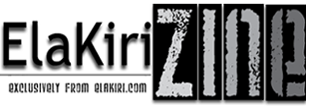This tutorial will teach you how to create a realistic looking object using V-Ray which is a very popular renderer that is widely used in the making of movies and videogames. V-Ray is not a built-in tool in 3D Studio Max and will have to be installed before attempting this tutorial. You can learn more about V-Ray from the official website of Chaos Group - the makers of V-Ray. This tutorial is only involved with the process of creating a V-Ray render and will not involve any modeling. ..

There are three different elements in our scene above, the teapot, the floor, and the surrounding environment. We will have to create and apply three different materials to each of these objects to create our final scene. The texture on the floor was created using an external image editor, and the same goes to the image reflected on the pot as well. We have uploaded the textures that we have used so that you can follow this tutorial easily. Please download the zip file at this link and extract the two files in it before we start this tutorial.
We will start by setting up our scene; go to Create>Geometry>Plane to create a simple plane in the centre of our scene. Your plane should have the following specs: Width: 150, Length:150, Length Seg: 1, Width Seg: 1, Render Multipliers: 100.

We are using the 'Teapot' object in our tutorial. You may use any object that you wish, but for the sake of the tutorial add a 'Teapot' by going to Create>Geometry>Teapot and set its parameters as illustrated in the image below:

Our scene is now ready, before we start creating our materials, we need to setup the render engine to use V-Ray. Start off by going through Rendering>Render>Common>Assign Render>Production>Vray Render and set the initial parameters of the renderer under the "Renderer" tab as illustrated in the image below:

Under the same tab, find the "Environment" rollout and activate the two available "Overrides" - Namely, the GI Environment and the Reflection Environment effects. You will have to assign a material for both which will work as environment map, click on the button that says "None" to access the "Material/Map Browser" where you would have to look for and select "VRay HDRI". After clicking on OK, you can simply drag the now "Map#1 (VRayHDRI)" to the button below it saying "None" to duplicate its content.
While keeping the VRay window still open, access the "Material Editor" by pressing "M" on your keyboard or going through Rendering>Material Editor. You will then have to drag the button you dragged earlier "Map#1 (VRayHDRI)" to the first slot in your Material Editor.
We will now use the map that you have downloaded at the start of this tutorial. Select the first slot in the Material Editor and then click on "Browse" under the Parameters rollout. Find the map that you have downloaded. Once selected, set the Map type to "Cubic environment".

Floor Material
Select the second slot in the Material Editor and then click on the "Standard" button to open the Material/Map Browser. Select "VRayMtl" from that list and click on OK. Click then on the square button next to the Diffuse colour to open the Material/Map Browser once again, this time you have to select "Bitmap" to use the Bitmap.jpg that you have downloaded at the start of this tutorial.
Search for the "Coordinates" rollout in the materials properties and set the 'tilling' to X=1200 and Y=1200. You would also have to set the Mapping to "Planar from Object XYZ". Our material is now almost done. Apply it to the plane that we have on the stage by clicking on the 'Assign Material to Object' button: ![]() .
.

We are now going to make our floor more realistic by adding bump and reflection maps to it. Get back to the parent material by clicking this button: ![]() . Scroll down and open the "Maps" rollout and drag a material from 'Diffuse' to the "Reflect" map. Select a copy on the pop up window and drag it again to 'Bump" map and select "Instance" on the pop up window. Go the Bitmap Settings of 'Diffuse', look for the "Output" rollout and set the Output Amount to 1.3.
. Scroll down and open the "Maps" rollout and drag a material from 'Diffuse' to the "Reflect" map. Select a copy on the pop up window and drag it again to 'Bump" map and select "Instance" on the pop up window. Go the Bitmap Settings of 'Diffuse', look for the "Output" rollout and set the Output Amount to 1.3.
The Teapot Material
We are going to create our final material now. Select an empty slot in the Material Editor. Hit the 'Standard' button and select "Raytrace" from the Material/Map list. Change the 'Diffuse' colour to dark red (or whatever colour you wish to use for your pot!) and set the reflection colour to gray. Set the specular level to zero. Finally, drag the material in the first slot (Our VRayHRD material) to the Environment map.
You can optionally change the reflection colour to white to get a more mirror like reflection on the teapot. You do not have to do this for our tutorial, but it is a nice element to experiment with on your own. You can now simply apply the material that we have created to our teapot using the "Assign Material to Object" button. Render the scene once you're ready and you should get something similar to the image displayed here:




























